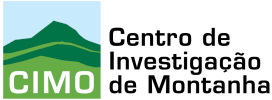Overview
In the literature, there are many investigations addressing the identification and quantification of biological hazards in foods surveyed at different stages in the farm-to-fork chain. Being able to access to and gather this information has become increasingly relevant in the development of pathogens’ risk assessment models, risk management tools and meta-analysis by both food researchers and food safety authorities. Nevertheless, this information is largely dispersed, disharmonised and not always accessible.
The Pathogens-in-Foods web application brings together, under a harmonised arrangement, data on the prevalence and enumeration of pathogens in foods produced, commercialised and/or consumed in Europe. Pathogens-in-Foods has been constructed to facilitate the access, visualisation and assessment of microbiological occurrence data from different sources.
Searches in the database can be performed for following food categories and pathogens:
| Categories | Pathogens | |||
|---|---|---|---|---|
| Meat and meat products | Salmonella spp., | |||
| Eggs and egg products | Campylobacter spp., | |||
| Milk and milk products (dairy) | Shigatoxin producing Escherichia coli | |||
| Grains and grain-based products | Listeria monocytogenes | |||
| Aquatic based food | Yersinia enterocolitica | |||
| Fruit and primary derivatives thereof | Bacillus cereus | |||
| Garden vegetables and primary derivatives thereof | Clostridium perfringens | |||
| Legumes, nuts and oilseeds | Staphylococcus aureus | |||
| Beverages | Norovirus | |||
| Composite dishes | Hepatitis A virus | |||
| Sugar and similar | Hepatitis E virus | |||
| Confectionery including chocolate | Cryptosporidium spp. | |||
| Herbs, spices and similar | Toxoplasma gondii | |||
| Animal and vegetable fats and oils and primary derivatives thereof | Giardia duodenalis |
CONSTRUCTING AND UPDATING PATHOGENS-IN-FOODS
Scientific articles are periodically identified through systematic literature searches using key terms in English, Spanish, French and Portuguese. Once a scientific paper is considered adequate in terms of relevance and methodological quality; a number of variables, such as study features, food class, food chain stage, microbiological methods, and prevalence/enumeration results, are codified and inserted into the Pathogens-In-Foods database.
The variables extracted that feed the database depend on both the type of pathogen (bacteria, parasites or viruses) and the type of essay (prevalence and/or enumeration). Generally, the data extracted from the published studies are:
Characteristics of the study: country, year, type of study and duration of survey;
Characteristics of the agent: pathogen, serotype, serovar, subtype, when applicable;
Characteristics of the food sample: food category (beverages, composite, dairy, grains, eggs, fruits, legumes, meat, seafood, vegetables and sugars), a sub-hierarchy for every food category, species for animal origin food (bovine, ovine, caprine, equine and mixed), ready-to-eat (RTE) status, packaging status of food (unpacked/packed), stage in the food chain (farm, mid-processing, end-processing, retail, restauration), temperature class at sampling (chilled, ambient, frozen, NA);
Characteristics of the essays: sample weight, detection method, enumeration method, limit of quantification (LoQ), confirmation (yes/no), mechanism to handle substitution;
Results: sample size, number of positive samples, number of samples above LoQ, histogram of frequencies for concentrations, mean concentration, standard deviation of concentrations and individual concentrations, if provided.




